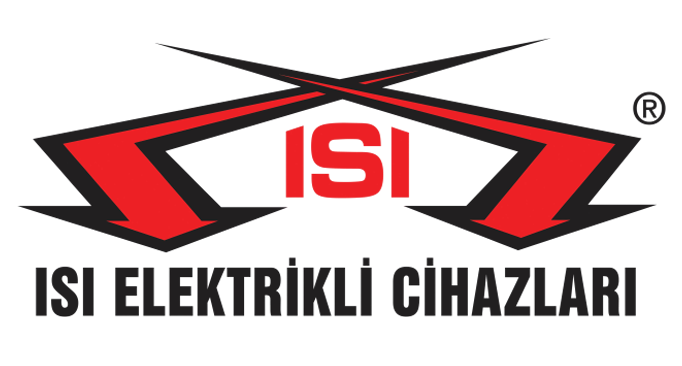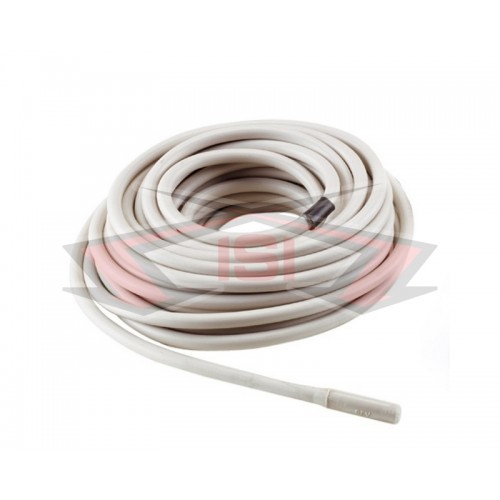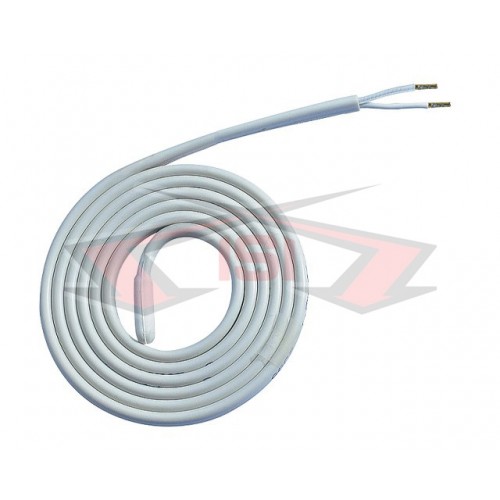Cuttable Cable Heaters
Cuttable cable heaters are special heating elements that can be adjusted in different sizes and desired watt density, cut in multiples of a meter, and used accordingly. Thanks to their flexibility, they can be easily utilized in various industrial and commercial applications.
These heaters have the ability to be cut to the desired length and can be manufactured to suit different supply voltages. One end can be sealed with silicone to make them ready for use. During operation, they provide uniform heat distribution for efficient heating. Additionally, their durable structure ensures long-lasting performance.
Cuttable cable heaters have a wide range of applications. They are effectively used for heating pipe and tank surfaces, controlling the temperature of machinery and equipment, and providing heating solutions in industrial processes. They are also preferred in greenhouses and the livestock sector to regulate environmental temperatures.
The installation and use of these heaters are quite practical. Once cut to the required length, one end is sealed with silicone to provide insulation against external factors. The other end is then connected to an appropriate voltage supply for operation. To ensure long-lasting and safe use, it is essential to follow the manufacturer’s recommended installation guidelines.
Custom production options are available based on specific needs. Upon request, they can be manufactured in desired dimensions and technical specifications, with one end pre-sealed with silicone and ready for use. For custom projects, you can contact us to determine the most suitable solution.
Cuttable Cable Heaters
Cuttable cable heaters are a type of heater used in electrical heating systems. These heaters are commonly used to heat liquids or gases in applications such as pipelines, tanks, boilers, and industrial equipment. Cuttable cable heaters have a flexible structure and can be cut to the desired size. This feature allows them to adapt to different shapes and sizes, making them suitable for various applications. Additionally, the installation of cuttable cable heaters is easy, and they are widely used in various industrial environments.
Types of Cuttable Cable Heaters
- Carbon Fiber Cuttable Cable Heaters: Carbon fiber is a lightweight and durable material. These types of cuttable cable heaters are known for their fast heating capability and are used in many industrial heating applications. Due to their low energy consumption and high efficiency, they are especially preferred in the automotive, aerospace, and medical device industries. Carbon fiber heaters provide uniform heat distribution, ensuring balanced surface heating and stable performance over long-term use.
- Metal Alloy Cuttable Cable Heaters: Made from metal alloys such as nickel-chromium and iron-chromium-aluminum, these cuttable cable heaters offer high-temperature and corrosion resistance. They are widely used in industrial furnaces, plastic processing machines, metal melting systems, and large-scale heating applications. These heaters can withstand extreme temperatures and resist oxidation, making them reliable and long-lasting even in harsh environments. Additionally, metal alloy cable heaters can be produced with different watt densities, providing versatility for various applications.
- Polymer Filament Cuttable Cable Heaters: Polymer filaments offer flexibility and durability. These types of heaters are ideal for small-scale applications, especially in medical devices and laboratory equipment. Due to their lightweight and thin structure, they can be easily integrated into compact devices. Polymer filament heaters operate at low voltage, ensuring energy efficiency while providing reliable heating. They are also preferred for applications requiring precise temperature control at lower heat levels.
- Quartz (Silica) Cuttable Cable Heaters: Quartz cuttable cable heaters are highly resistant to high temperatures and thermal shocks. They are frequently used in industries such as glass manufacturing, ceramic production, laboratory furnaces, and metal processing, where extreme heat is required. Quartz material provides superior resistance to sudden temperature changes, ensuring long-lasting performance. These highly efficient heaters are also commonly used in infrared heating systems and environments that require precise temperature regulation.
- Polyimide (Kapton) Cuttable Cable Heaters: Kapton film is a polyimide material that offers high-temperature resistance, chemical stability, and mechanical durability. These heaters are primarily used in the electronics and aerospace industries. Due to their thin and flexible design, they can be integrated into delicate electronic components. Kapton heaters can withstand extreme temperature variations and offer protection against electromagnetic interference. They are commonly used in high-safety environments, including aviation, satellite technology, and medical devices.
Cuttable Cable Heaters Technical Specifications
- Material: Nickel-chromium alloy, stainless steel, copper alloy
- Power: Can vary from 1 Watt to 1000 Watts
- Voltage: Can range from 12 Volts to 480 Volts
- Resistance: Can vary from 1 Ohm to 1000 Ohms
- Temperature Range: Can range from -50°C to 800°C
- Diameter: Can range from 1 mm to 5 mm
- Length: Can range from 1 meter to 100 meters
- Insulation Material: Silicone, PVC (polyvinyl chloride), Teflon (polytetrafluoroethylene)
- Protection Class: Can be IP65 or higher
Other Technical Features of Cuttable Cable Heaters
- Body Material: Stainless steel, plastic (polymer). Stainless steel provides high-temperature and corrosion resistance, while polymer materials offer lightweight and flexible solutions. Different material options are available depending on the application area.
- Filling Material: Epoxy resin, silicone. Epoxy resin ensures strong insulation and enhances electrical safety, whereas silicone filling provides flexibility and high-temperature resistance. These materials increase resistance to moisture and external factors, ensuring long-lasting durability.
- Cable Type: Silicone-coated cable, PVC-coated cable, Teflon-coated cable. Silicone-coated cables provide high-temperature resistance and flexibility, while PVC-coated cables offer an economical and durable solution. Teflon-coated cables are ideal for applications requiring chemical resistance and high-temperature performance.
- Terminals: Copper terminals, brass terminals. Copper terminals ensure high conductivity and minimize energy loss, while brass terminals enhance mechanical durability for long-term use. Different terminal options are available based on application requirements.
- Operating Temperature Range: -50°C to +250°C. With different material options, these heaters provide flexibility at low temperatures and reliable heating performance at high temperatures. Custom models with higher temperature resistance can also be produced for special applications.
- Power Density: 5W/m – 100W/m. Various power options are available to meet different heating needs. Low-power models are suitable for precise temperature control, while high-power models are used in applications requiring rapid heating.
- Water and Moisture Resistance: IP65, IP67, IP68 protection ratings. Water and moisture-resistant models allow safe usage in outdoor or humid environments. IP68-rated models can be used completely submerged in water.
- Mechanical Durability: Resistant to impact and vibration. Designed for long-term use in industrial environments. The robust outer coating ensures reliable performance under mechanical stress.
Applications of Cuttable Cable Heaters
- Agriculture and Horticulture: In the agriculture sector, cuttable cable heaters can be used for greenhouse heating systems, soil heaters, and heating agricultural equipment. They are particularly preferred to improve plant growing conditions in cold climates.
- Pet Care: In animal breeding facilities, cuttable cable heaters can be used to heat water tanks, troughs, and poultry houses. This ensures that animals live in healthy and comfortable conditions.
- Plastic and Polymer Industry: Cuttable cable heaters are widely used in plastic processing machines, extrusion lines, and mold heating applications. They provide heating for melting and shaping plastics.
- Ventilation and Air Conditioning Systems: Cuttable cable heaters can be used to prevent freezing of ventilation ducts, fans, and air handling units. This increases the efficiency of HVAC systems and reduces the risk of freezing.
- Water and Wastewater Industry: Cuttable cable heaters can be used to prevent freezing of water tanks, pipelines, and wastewater treatment plants. This ensures the functionality of water systems and equipment during winter months.
Advantages of Cuttable Cable Heaters
- Flexibility: Cuttable cable heaters can be cut into different sizes and shapes, allowing them to adapt to various applications and be used in complex configurations.
- High Heating Capacity: Cuttable cable heaters can have high power and generate heat rapidly, enabling quick heating times and response rates.
- Precise Heat Control: Cuttable cable heaters can be integrated with thermostats and other control devices to provide precise temperature control, maintaining desired temperature ranges.
- Longevity: Quality cuttable cable heaters have a long working life. When properly maintained and used under the right conditions, they can operate efficiently for years.
- Easy Installation: Cuttable cable heaters are generally easy to mount and have simple installations, saving time and labor.
- Versatile Applications: Cuttable cable heaters can be used in many different industrial, commercial, and residential applications. They are widely used in food processing, automotive, medical devices, industrial heating, and many other fields.
- Resilient Structure: Cuttable cable heaters are resistant to impacts, vibrations, and various environmental conditions, enhancing their durability and suitability for long-term use.
Materials Used in the Production of Cuttable Cable Heaters
- Heater Wire Materials: Heater wires form the main material for heat generation. High-resistance metals such as nickel-chromium alloy (Nichrome), iron-chromium-aluminum alloy, and copper are used for this purpose.
- Insulation Materials: Insulation materials covering heater wires provide electrical insulation and protection against external influences. Materials like silicone rubber, PVC (polyvinyl chloride), Teflon (polytetrafluoroethylene), and Kapton are commonly used for insulation.
- Filling Materials: Filling materials inside cuttable cable heaters maintain the structural integrity and help transmit heat homogeneously. Epoxy resin, ceramic fillers, and silicone-based fillers can be used for this purpose.
- Protective Coating Materials: Some cuttable cable heaters are coated with protective coating materials to provide additional protection against external influences. Materials such as stainless steel, aluminum, and plastic can be used for protective coating.
- Terminals and Connection Elements: Terminals and connection elements that provide electrical connection for the heater are typically made of conductive metals like copper or brass.
Technical Details to Consider in Selecting Cuttable Cable Heaters
- Application Environment: The characteristics of the environment where the heater will be used are crucial in selection. Factors like moisture, chemicals, dust, vibration, etc., affect the material and protection properties of the heater.
- Installation Convenience: Ease of heater installation and proper positioning are important. Installation requirements should also consider physical constraints in the application area.
- Compatibility and Standards: Compliance with applicable standards in the sector or industry where the heater will be used is essential. Compliance with specified standards ensures safety and compatibility.
- Cost and Economy: The cost of the heater should be evaluated based on factors like quality, performance, and durability. High-quality heaters that provide lower operating costs in the long run are often a more favorable choice.
- Warranty and Support: The warranty period and technical support services provided by the manufacturer or supplier are important for product reliability and supporting purchase decisions.
- Performance and Efficiency: Efficient heater operation is important for energy consumption. High efficiency and low energy consumption can reduce costs in the long term and minimize environmental impact.
Features of Cuttable Cable Heaters Ensuring High Thermal Efficiency
- Uniform Heat Distribution: Cuttable cable heaters provide even heat distribution across the entire surface, minimizing temperature differences. This prevents energy loss and ensures maximum thermal efficiency.
- Fast Heating and Cooling: Due to their low thermal inertia, they heat up quickly and cool down rapidly when power is cut off. This feature reduces energy consumption and enhances efficiency.
- Energy Savings: High-efficiency resistance wires ensure maximum heating with minimal energy consumption. Proper temperature control prevents unnecessary energy usage.
- High Thermal Conductivity: The materials used facilitate rapid and effective heat transfer, making the heating process more efficient. This minimizes energy losses and provides higher performance with lower power consumption.
- Various Power Options: Manufactured with different watt densities according to usage requirements, allowing users to select the most suitable heating power. This prevents unnecessary energy consumption and improves heating efficiency.
- Insulation Materials: High-insulation materials such as silicone, epoxy resin, and Teflon minimize heat loss while ensuring resistance to external environmental conditions.
- Smart Temperature Control: Integrated with thermostats and temperature sensors for precise heat level regulation. This prevents excessive energy use and ensures optimal heating performance.
- Long-Lasting Use: Made from high-quality materials and featuring a durable design, these heaters resist overheating, wear, and deterioration. This ensures prolonged and efficient operation.
Energy Savings with Cuttable Cable Heaters
- Low Power Consumption: Cuttable cable heaters provide maximum heating performance with minimal energy usage due to their high-efficiency resistance wires, preventing unnecessary energy consumption.
- Customizable Length: The ability to cut the heater to the required length prevents excessive material use and optimizes energy efficiency.
- Precise Temperature Control: Integrated with thermostats and temperature sensors to prevent overheating and ensure operation only at the required temperature.
- Fast Heating and Minimal Thermal Loss: With low thermal inertia, these heaters heat up quickly, reducing energy loss. They also cool down rapidly when power is cut, avoiding unnecessary energy usage.
- Insulated Design: High-quality insulation materials minimize heat loss, ensuring that the energy used for heating is utilized efficiently.
- Targeted Heating: Cuttable cable heaters allow localized heating, preventing the need to heat large areas unnecessarily, which significantly reduces energy consumption.
- Long-Lasting Performance: Their durable structure ensures efficient operation for many years, reducing maintenance and replacement costs. With less frequent servicing required, they contribute to long-term energy savings.
- Various Power Options: Available in different watt densities to match specific heating needs, preventing excessive power usage and optimizing energy efficiency.
Technical Details to Consider When Choosing Cuttable Cable Heaters
- Operating Voltage: The voltage rating should match the power supply of the intended environment. Incorrect voltage selection can lead to inefficient operation or system failures.
- Power (Watt) Rating: The watt density should be chosen according to the heating requirements of the application. Low power may result in insufficient heating, while excessive power can lead to unnecessary energy consumption.
- Heater Length: Cuttable cable heaters should be used at the required length. Cutting them too long or too short can affect heating performance and safety.
- Material Type: The material should be selected based on the temperature and chemical resistance requirements of the operating environment. Insulation materials such as silicone, PVC, and Teflon are available.
- Heat Distribution: Heaters that provide uniform heat distribution enhance energy efficiency and minimize temperature variations on the surface.
- Insulation Quality: Durable insulation materials ensure long-lasting and safe use. Materials resistant to water, chemicals, and mechanical wear should be preferred.
- Maximum Operating Temperature: The selected heater's maximum temperature resistance should be suitable for its application. High-temperature-resistant models offer safer and more efficient performance.
- Connection Terminals and Installation: Secure electrical connections should be ensured by using appropriate terminals and wiring methods. Incorrect connections or improper cable terminals can cause performance loss or malfunctions.
- Energy Efficiency: Models that provide high heating performance with low energy consumption should be chosen to prevent unnecessary energy losses.
- Application Suitability: The heater type should be selected according to the industry, whether for industrial, medical, agricultural, or electronic applications. Additional features such as waterproofing, flexibility, or chemical resistance should be evaluated based on the working environment.
Working Principle of Cuttable Cable Heaters
Cuttable cable heaters are flexible heating elements that operate using resistance wires, converting electrical energy into heat energy. They can be cut to the required length and provide uniform heat distribution.
Operating Mechanism
- Electrical Current and Resistance: The special resistance wires inside the cable generate heat when exposed to electrical current, following Joule's law. These resistance wires are designed to provide a specific watt density.
- Heat Generation: Electrical energy spreads through the resistance wire and converts into heat. High-conductivity and low-loss materials ensure efficient operation.
- Insulation and Safety: Cable heaters are covered with insulation materials such as silicone, PVC, or Teflon to protect against electrical leakage and external factors.
- Uniform Heat Distribution: The even distribution of resistance wires ensures consistent heating across the surface, preventing temperature variations and effectively heating the desired area.
- Voltage and Power Control: The heater is powered according to the voltage and power requirements of the application. It can be integrated with thermostats and temperature sensors for precise temperature control.
- Flexibility in Application: The ability to cut the heater to the desired length allows easy adaptation to different surfaces and environments, making it a versatile heating solution.
Advantages
- Easy installation and flexible use.
- Fast heating and energy efficiency.
- Uniform heat distribution for balanced heating.
- Safe use with various insulation materials.
- Available in different voltage and power options to suit specific needs.
Frequently Asked Questions
Cuttable Cable Heaters


